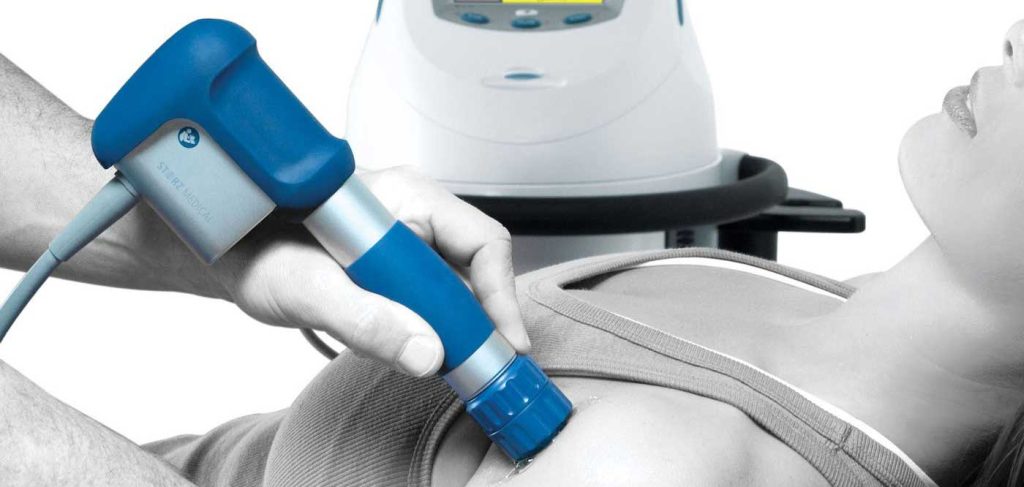Extracorporeal shockwave therapy (ESWT) is a non-invasive treatment option for musculoskeletal injuries. It involves the application of acoustic pressure wave pulsations applied on the skin. These pressure waves are then transmitted deeper into the injured tissues. Injuries commonly treated using EWST include plantar fasciitis, golfer’s and tennis elbow, and Achilles tendinopathy.
In the 1980s, ESWT was first used to treat kidney stones. Shockwaves were able to be targeted and applied at a specific tissue depth to destroy the stones. Since then, it has been adapted to treat poor healing fractures, calcification in the shoulder, and now a wide range of musculoskeletal conditions.
ESWT transmits acoustic pressure wave pulsations into the injured tissues. These pressure waves create biological responses in the body’s cells through mechanotransduction. Mechanotransduction is the ability of a cell to sense and converts mechanical stimuli (acoustic pressure waves) into biochemical signals that result in cellular changes. This helps to accelerate the body’s own healing processes.
Effects of ESWT include:
- Stimulation of the cellular metabolism
- Increased circulation to the area
- Tissue regeneration
- Wound healing
- Pain relief
- Bone remodelling
- Release of growth hormone

When we experience an injury, our body does what it can to heal the injured tissues. Many tissues, however, are slow in healing, such as tendons and ligaments. These areas have very little blood flow, which slows the healing process. During the healing process, scar tissue is laid down over the damaged tissues, which is much less extensible than healthy tissue. Rehabilitation helps to assist the healing process, encourage a quicker recovery and help increase the extensibility of scar tissue and realign the tissue fibers. In some cases, our body isn’t actually able to fully heal the injury and the condition becomes chronic. Intervention is necessary in these cases. Shockwave is a great tool for many musculoskeletal conditions but especially chronic conditions and for slow-healing tissues.
- Chronic tendinopathies
- Plantar fasciitis
- Golfers and tennis elbow
- Achilles tendinopathy
- Patellar tendinopathy (jumper’s knee)
- Stress fractures
- Bursitis
- Shin splints
ESWT is a non-invasive treatment that requires no downtime and has no limitations on activities post-treatment. Ultrasound gel is applied to the area for conduction, and the handpiece is focused over the injured or painful area. The treatment is slightly uncomfortable but should feel no more than a 3 out of 10 on the pain scale. Although some people may feel some slight soreness later in the day, most people find they experience pain relief the same day of the treatment.
Crystal Bartkowski
Certified Athletic Therapist
